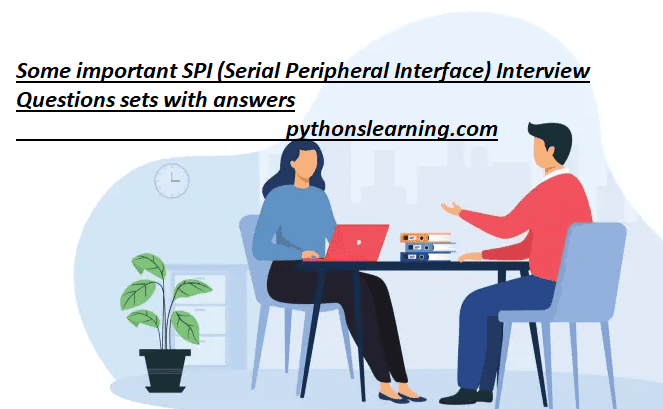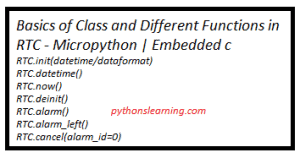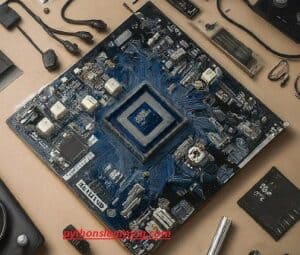Certainly! Here are some important SPI (Serial Peripheral Interface) interview questions along with their answers:

Table of Contents
Basic Questions
Q1: What is SPI?
SPI (Serial Peripheral Interface) is a synchronous serial communication protocol used to transfer data between a microcontroller and peripheral devices. It uses a master-slave architecture with a single master and multiple slaves.
Q2: What are the four main signals in SPI?
The four main signals in SPI are:
MOSI (Master Out Slave In): Data line for data sent from the master to the slave.
MISO (Master In Slave Out): Data line for data sent from the slave to the master.
SCK (Serial Clock): Clock signal generated by the master to synchronize data transmission.
SS (Slave Select): Line to select the slave device (often active low).
Q3: How does SPI differ from I2C?
SPI is a full-duplex communication protocol, meaning data can be sent and received simultaneously. It uses separate lines for data in and data out, whereas I2C is half-duplex and uses a single line for both data in and out. SPI can achieve higher data rates than I2C, but requires more pins for communication.
Q4: What is SPI mode?
SPI mode refers to the combination of clock polarity (CPOL) and clock phase (CPHA) settings. There are four SPI modes:
Mode 0: CPOL = 0, CPHA = 0
Mode 1: CPOL = 0, CPHA = 1
Mode 2: CPOL = 1, CPHA = 0
Mode 3: CPOL = 1, CPHA = 1
These settings determine when the data is sampled and how the clock signal behaves.
Q5: How do you connect multiple slave devices to a single SPI bus?
Multiple slave devices can be connected to a single SPI bus by using separate Slave Select (SS) lines for each slave. The master device will control the SS lines to select which slave device to communicate with at any given time. Only one SS line is active (low) at a time.
Advanced Questions
Q6: What is the maximum data rate of SPI?
The maximum data rate of SPI depends on the specific hardware implementation. However, SPI can generally achieve data rates in the range of tens of megabits per second (Mbps). Some advanced SPI implementations can reach even higher speeds.
Q7: Explain the concept of SPI daisy chaining.
In SPI daisy chaining, multiple slave devices are connected in a series chain. The MOSI line from the master connects to the MOSI of the first slave, the MISO of the first slave connects to the MOSI of the second slave, and so on, with the MISO of the last slave connecting back to the master. This allows a single SS line to select and communicate with all the slaves in the chain.
Q8: How can you ensure data integrity in SPI communication?
Data integrity in SPI communication can be ensured by:
Using checksums or CRCs to detect errors.
Implementing handshaking protocols to confirm successful data transmission.
Ensuring proper signal integrity by using appropriate pull-up/pull-down resistors, proper grounding, and signal shielding.
Q9: What are the common issues you might face with SPI communication?
Common issues in SPI communication include:
Signal integrity problems like noise and crosstalk.
Mismatched SPI modes between master and slave.
Incorrect clock frequency settings.
Timing issues such as incorrect data sampling due to clock skew.
Q10: How can you implement SPI communication in Python using spidev?
To implement SPI communication in Python using the spidev library, you can follow these steps:
Install the spidev library: pip install spidev
Initialize the SPI bus:
import spidev
spi = spidev.SpiDev()
spi.open(0, 0) # Open SPI bus 0, device 0
spi.max_speed_hz = 50000 # Set the SPI clock speed
spi.mode = 0 # Set the SPI mode
data_to_send = [0x01, 0x02, 0x03]
response = spi.xfer2(data_to_send)
print("Received data:", response)
spi.close()These questions and answers should give you a solid foundation for preparing for an SPI-related interview.


